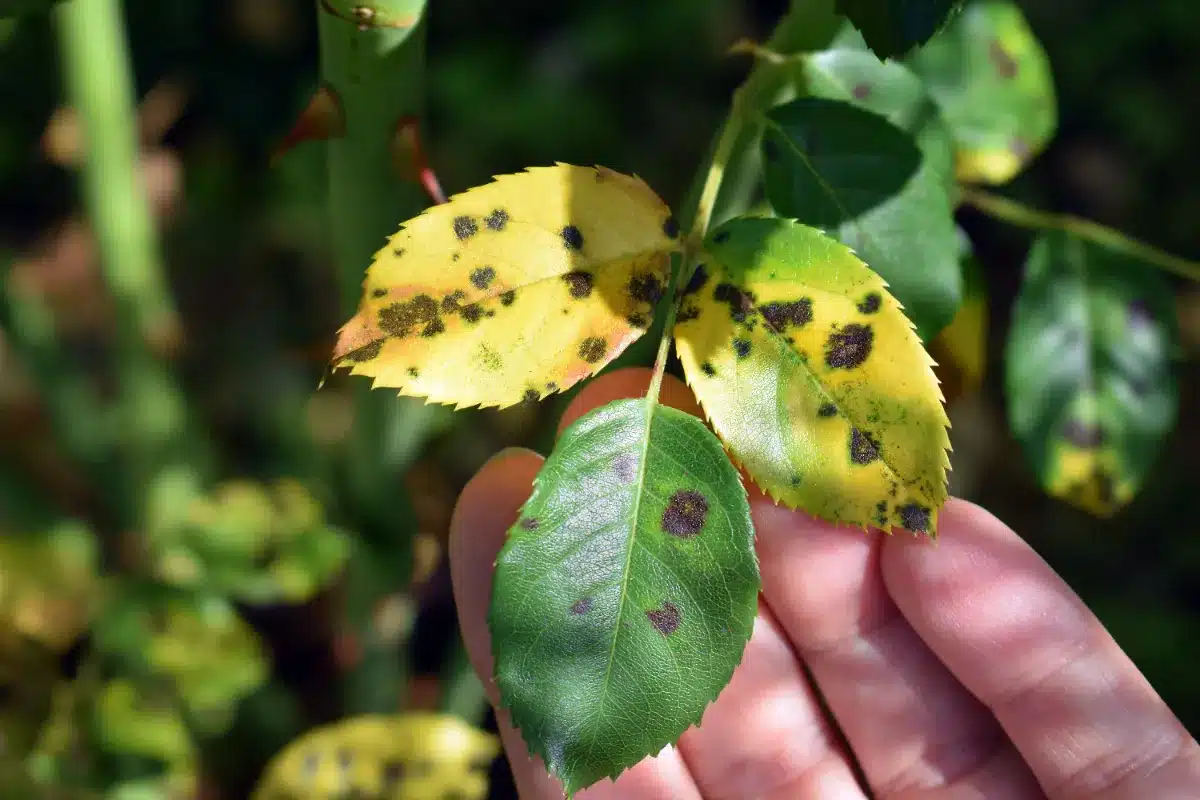Roses, known for their stunning looks and sweet scent, sometimes fall prey to a pesky yet damaging disease called black spots. This fungal issue can really mess with rose bushes, especially during the warmer spring and summer months. Getting a handle on what causes this disease and how to deal with it helps keep your rose plants looking their best.
Getting to know the problem
Black spots on roses come from a fungus named Diplocarpon rosae. It shows up as round, black marks on the leaves. If you don’t treat it, those leaves will eventually yellow and drop off early, which weakens your plant a lot. Not only does it hurt the rose bush’s appearance, but it can also seriously harm its health. Over time, you might see fewer blossoms, smaller or oddly shaped blooms, and in the worst cases, the plant could die if the problem isn’t managed. By September, these plants might lose all their leaves.
Water helps spread this fungus, starting from the base of the rose bush where it tends to be damp. The black spots start on the leaves and can spread quickly if conditions are right (more moisture means a faster spread). This quick expansion makes the plant even weaker, so acting fast is key.
A smart way to treat it
Some gardeners have started using a less conventional but effective fix: cow’s milk. Full of proteins and enzymes with natural antifungal properties, cow’s milk is a neat alternative to chemical fungicides. The suggested approach is to mix one part milk with two parts water and spray it on your plants.
You should apply this milk mixture every week to keep it working at its best. When the leaves get some sunlight, it boosts the milk’s ability to fend off fungi (sunlight creates a setting where fungi just don’t thrive). Plus, it leaves a thin protective layer on the leaves, which helps stop fungal spores from sticking around. As one gardener mentioned, “It’s the best solution against the disease. Applied weekly, this product helps fight black spots as well as any synthetic fungicide, including chlorothalonil.”
Keeping them healthy
While treating black spots is important once they show up, preventing them in the first place really helps keep your rose bushes in tip-top shape. It’s a good idea to prune your roses each year (this helps more air circulate through the plant so it stays drier) because drier conditions mean fungi are less likely to grow. When you water your roses, try to target the base near the soil rather than soaking the leaves or flowers.
Sticking to these preventative measures not only cuts down on humidity around the leaves but also helps reduce when spores from the soil splash back onto the plant.
By mixing treatment with smart prevention, you can keep your roses lively and healthy throughout the growing season. Giving natural methods like the cow’s milk spray a try not only offers a solid way to fight fungal problems but also fits well with eco-friendly gardening methods.
Keeping your roses free of black spots means staying on top of maintenance and taking care before problems start—rewarding you with vibrant, blooming plants year after year. With innovative techniques like this one in your gardening toolbox, why not try out these sustainable practices and watch your garden thrive?







